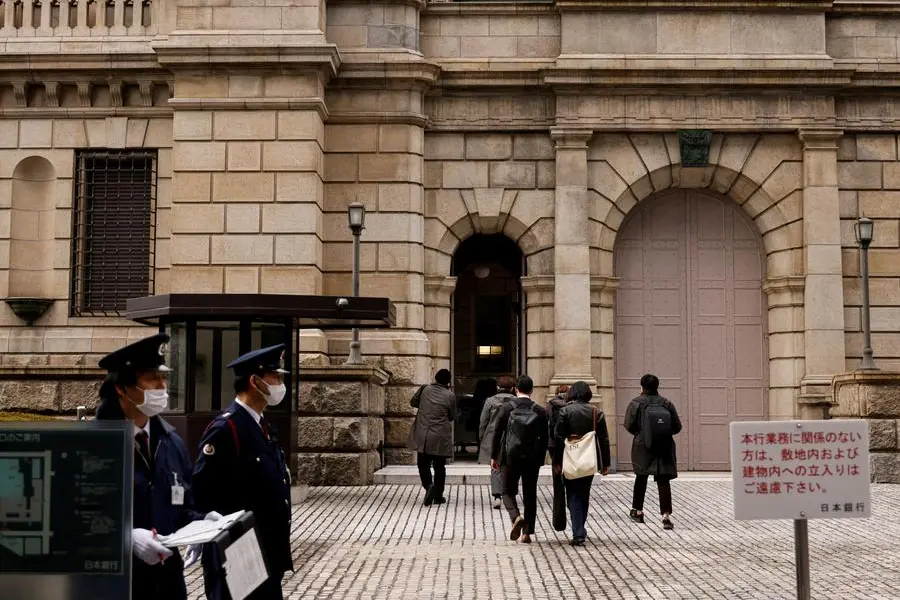PHOTO
TOKYO - The Bank of Japan has ditched its dovish forward guidance in favour of a more "data-dependent" approach to policy deliberations after ending negative rates, sources say, keeping the door open for another near-term hike in borrowing costs.
The BOJ ended eight years of negative rates and unorthodox policy last week, making a historic shift away from decades of massive monetary stimulus.
Despite the rate hike, the yen has tumbled more than 1% since the policy pivot, as markets' dovish reading of the BOJ's communication reinforced expectations that another rate hike would be some time off.
In its decision last week, the BOJ said it "anticipates that accommodative financial conditions will be maintained for the time being".
However, a close look at the BOJ statement shows the bank has made no promise to keep interest rates at current low levels but instead conditionally states that borrowing costs could stay low if economic and price conditions don't change.
"The BOJ has made no commitment about the future rate hike pace," a source familiar with the bank's thinking said on the March statement, a view echoed by another source.
"The timing of the next move is data-dependent, which means all options are on the table," the first source said.
The BOJ's language last week compared with the more assertive tone of previous guidance that it "will continue" with ultra-loose policy to stably hit its price target, and "will not hesitate" to ramp up stimulus if needed.
The new approach to communication aligns the BOJ with other major central banks, including the Federal Reserve, which ditched rigid forward guidance in favour of a more discretionary approach as they hiked rates aggressively to combat soaring inflation.
While refraining from specifying a timing, BOJ Governor Kazuo Ueda said last week the bank could raise rates if trend inflation, which is still below 2%, heightens "a bit more."
"If our price forecast clearly overshoots or, even if our median forecast is unchanged, we see a clear increase in upside risk to the price outlook, that will likely lead to a policy change," Ueda said.
The remarks heighten the importance of the BOJ's fresh quarterly growth and inflation forecasts due at its next policy meeting on April 25-26, which for the first time will include projections for fiscal 2026.
While the BOJ likely won't hike rates next month, the new forecasts will offer clues on how optimistic policymakers are about the chance of trend inflation heightening to 2%.
A Reuters poll taken after the March policy shift showed more than a half of economists expect the BOJ to hike rates again this year, though most do not see rate hikes coming at least until the fourth quarter.
Some analysts see the weak yen as a potential trigger for further rate hikes, as the currency's renewed declines could push up raw material import costs again.
Ueda has said the BOJ "stood ready to respond" if yen moves had a huge impact on its economic and price projections.
"The BOJ seems wary of the risk of one-sided yen declines," which could prompt further rate hikes without much pause, said Shunsuke Kobayashi, chief economist at Mizuho Securities.
"There's a significant chance of the BOJ hiking rates again from October-December onward," he said.
Others even see the chance of action at the BOJ's meeting on July 25-26, when more data becomes available on whether bumper wages hikes are spreading to smaller firms.
"If there's a chance of an overshoot in inflation, the BOJ could act as soon as in July," said Mari Iwashita, a veteran BOJ watcher who is chief market economist at Daiwa Securities.
(Reporting by Leika Kihara. Editing by Sam Holmes.)























